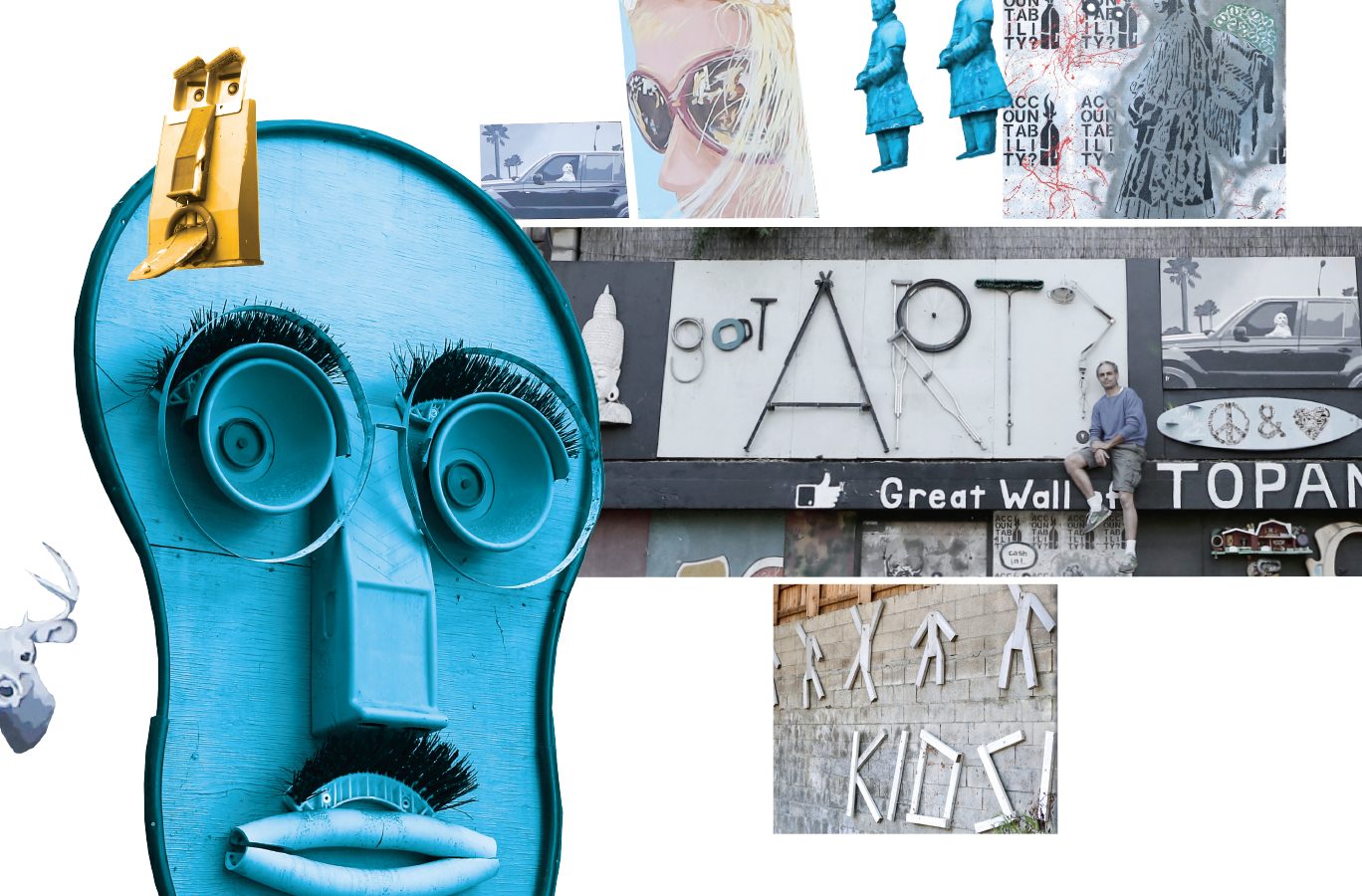
Off the Wall
The Great Wall of Topanga has amused and confused Valley commuters for half a decade. Meet the wry genius who created it.
-
CategoryPeople
Who is the man behind the wall of art you can’t miss while driving the winding Topanga Canyon Boulevard? It’s Rick Denman, the Great Wall’s owner, curator, creator and social commentator. He has owned his hillside Topanga property since 1998 but didn’t start work on the Great Wall until 2011. He initially began adorning the retaining wall as a deterrent to graffiti vandals.
A veteran Hollywood technical coordinator and camera operator, Rick is responsible for the wall’s many artful assemblages of reclaimed materials. Recalling a self-appointed critic who commented on the wall’s Facebook page that, “All your art is trash,” the 58-year-old laughs and says, “That’s right! It is. It would be landfill otherwise.”

Mount Rushhour
The two giant heads he made out of junk have inspired Rick’s newest project: He wants to add two more similar faces and call the grouping Mount Rushhour, in tribute to the national presidents’ memorial in South Dakota.
The tiki-esque head was the first to go up. “I’m extremely proud of the face,” he says. “It went together in a matter of minutes.” It includes a car ramp for a nose, a boogie board for the tongue, a toilet-paper holder as a nose ring and discarded street–sweeping brushes for eyebrows. Rick occasionally uses a broom handle to reposition the eyebrows. “It’s all in the eyebrows. They can be mean or happy,” he notes.
Kids
Originally this piece composed of salvaged boards read “20 Kids.” It was Rick’s memorial for the 20 children shot to death in 2012 at Sandy Hook Elementary School in Connecticut. “It was important to me to say something—it was kids, it was first graders,” says Rick, who is the father of two young children. “How can you just let that go?”
After a while, a neighbor complained that the memorial was depressing, so Rick compromised by taking down the number 20, turning it into a simple celebration of childhood. Prior to that, however, an unwelcome collaborator rearranged the boards one night so they spelled out “20 Lies”—a reference to the fringe belief that Sandy Hook was a staged “false flag” event. The artist promptly put them back to read “Kids” again.
Accountability
This stencil of a Native American by the local graffiti artist who goes by the pseudonym Accountability is the art wall’s ground zero. Many people mistakenly believe the stencil is the work of the British street artist and political activist, Banksy. Rick explains: “Banksy was in town for the Academy Awards for his documentary Exit Through the Gift Shop and everyone thought this work was by him. That’s what started the whole thing; it attracted a lot of attention.”
Rick began inviting artists (including his then-preschool-age son) to contribute art to the wall, which they did, on panels of HardieBacker waterproof board that can stand up to weather, dirt and the owner’s periodic pressure washing.
Architect May Sung Comes to The Rescue on a Studio City Reno Gone Wild
In the right hands…finally!











